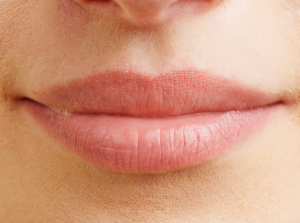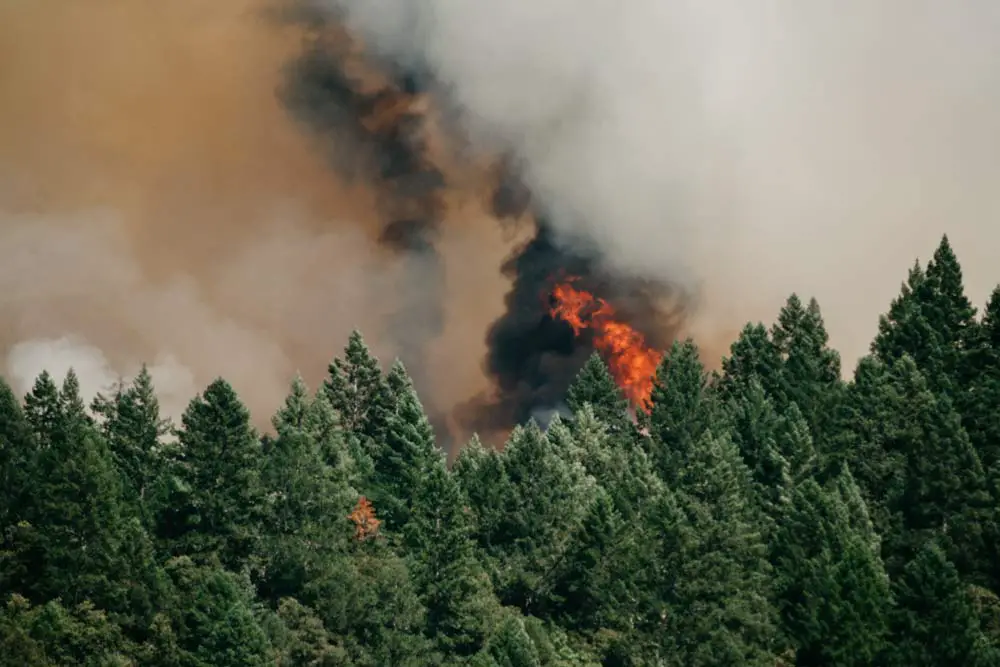How To Survive Wildfire Smoke And Asthma: 7 Powerful Strategies
How To Cope With Wildfire Smoke And Asthma
If you’re on the west coast of North America or in northern Europe right now, you’re probably wondering how to survive wildfire smoke and asthma. What’s the best way to protect your lungs?
If you are dealing with wildfire smoke and asthma, don’t panic – you can do a lot to still improve the quality of the air in your house, and to limit your exposure outdoors. The most important step is to clean the air in your home with a filter. You can also filter the air directly as it enters your body (but be sure to get the right mask). And there are more ways to keep our bodies clean and clear of toxins and particles in the smoke, which I discuss below.
Normally, it’s a blessing to live in the Pacific North West like I do. But with these wildfires and my asthma, this past week has been a nightmare.
Thankfully, I’ve researched the best ways to tackle the smoke, and I’m seeing good results.
These are the most important ways to protect yourself from wildfire smoke. If you or a loved one has asthma and you’re in a region affected by the smoky air, please keep reading.
Get An Air Filter To Help Deal With Wildfire Smoke And Asthma
Air purifiers are stand alone devices that can be used in any home. They basically pull in dirty air through one end and blow out clean air through the other. Think of a fan with a mesh filter over it, but more advanced and efficient.
According to a recent study by the National Institutes of Health, portable room filters worked to improve bronchial reactivity, lung function and treatment requirements in asthmatics. Everyone with asthma should have an air filter in their home, regardless.
So air filters are always beneficial for asthmatics, but in times of wildfire smoke, they’re a necessity.
You’re going to want a HEPA filter. Filters differ in cost and efficiency, with the better kinds able to filter out microscopic pollen, dust and bacteria (shoot for higher quality if you can – this is your lungs we’re talking about). Depending on the model, after several hours or days of running your air purifier, the air within your home will have been filtered several times.
If you plan on using an air purifier to help clean wildfire smoke out of your air, make sure it can handle the entire square footage of your home (you’ll be able to see how much space the machine will filter on its box or listing). Otherwise, make sure you use several air purifiers to cover all your rooms.
Personally, I have an air purifier in the front of my home and another one in the back where the air tends to stagnate.

I chose a Honeywell HEPA Allergen Remover because it specifically filters out allergens, including pet hair (yes – I have a cat despite my asthma – here’s how).
It’s really well reviewed, not just by me. Highly recommended (here’s the link to Amazon – using this link won’t cost you extra but will help us keep making great asthma-fighting content!*).
Learn More About The Honeywell HEPA Allergen Remover Here.
In addition to filtering harmful particles out of the air, air purifiers have a lot of other great benefits. They remove odors, allergens, cigarette smoke, and dust from the air you breathe. So keep those air purifiers running even when the wildfire smoke has cleared.
It’s also a good idea to keep your doors and windows closed as much as possible to prevent the wildfire smoke from getting in. I also like to keep a few regular fans going at all times to keep my air circulating and clean.
*Please note – be sure it double check what you order on Amazon, as there are multiple versions of the Honeywell HEPA and they seem to be changing. These Honeywell HEPAs are all well-reviewed. Yours might be slightly different that what I’ve got pictured here. And if you do check out purifiers on Amazon using our link, thank you! This helps us keep our asthma blog going – at no extra cost to you! See My Complete Guide To Air Filters
Stay Indoors – Or Wear Face Masks For Wildfire Smoke And Asthma
Of course, if you have asthma, your natural inclination with wildfire smoke will be to stay indoors. And you should stay indoors as much as possible, and avoid strenuous exercise outside (another reason why an indoor rowing machine is a great option for asthmatics – no need to go running outdoors!).
But of course, we all can’t stay indoors all the time. Face masks are a great option for people who work outside or can’t afford an air filter.
Not just any kind of face mask will do. The surgical masks people where outside when they’re sick are not nearly effective enough to filter out wildfire smoke particles. Please don’t use one of these if you’re trying to protecting your lungs.
However, that doesn’t mean there aren’t some options for us. The Washington State Department of Health recommends using N95 or N100 rated face masks. These kinds of masks are called “particle respirator” and they are designed to filter out fine particles from the air.
This is exactly what you need to combat wildfire smoke with asthma. Now, it’s not going to filter out harmful gasses like carbon monoxide, so keep that in mind. But hopefully that’s not an issue assuming you’re at home and not actually fighting a wildfire itself.
Considering that you can get some appropriate face masks on Amazon for under $20 (find some here), this can also be a good option if an air filter for your home just isn’t in the budget right now.
I haven’t used a face mask myself – thankfully I work from home, so I’m able to limit my time outside. But I did just order these masks (link to Amazon).
I feel like as an asthmatic, having a good mask is just a good idea in case of an emergency or an environmental allergy concern. And since I don’t have a car, it will be nice to have one for running errands in the coming days.
NO Mouth Breathing
Since we’re talking about filtering the air to deal with wildfire smoke and asthma, let’s not forget that our bodies have a built-in air filter, too. Yes, I’m talking about your nose.
For asthmatics, our nose is our best friend. It reduces the total amount of air we breathe in (see why breathing less is actually really important for asthma management here). AND, the hairs and mucus that line the nasal passage work to filter out particles of dust and other nasty things.

Mouth-breathing can lead to all sorts of ‘fun’ things like oral problems and hyperventilating. If you’re interested, learn more about why it’s so important to eliminate mouth-breathing here.
This is why everyone should work to breathe only through their nose, as much as possible. I.E., keep that mouth closed!
During the day, that means you should try to become more conscious of how you’re breathing. Especially if you have to be outdoors in this fire smoke.
And during the night, that means you might need this ‘treat asthma at home‘ mouth-breathing tip. But trust me, it’s a little weird …
If you’re like I was, you often wake up in the middle of the night with really bad asthma symptoms. Eventually I learned that taping my lips shut at night could improve my asthma symptoms. Turns out, it really works! Weird, right?
Of course, your nose is not enough to completely filter out wildfire smoke, but it will at least reduce it a little. Plus, working to breathe through your nose all the time can give you the added benefit of helping manage your asthma symptoms – win, win!


Drink Up For Wildfire Smoke and Asthma
Second last but not least, water. Water, water, water. Seems like I’m always talking about how water can help us asthmatics.
In fact, drinking more water was the first step in my journey to get off albuterol.
So just like with air filters and nose-breathing, drinking lots of water should already be in your ‘Asthma Management Arsenal.’
And now with all of this intense heat and dryness coming from the fires and their smoke, it’s even more important to keep your body hydrated.
Not only will water cool you down and keep thirst away, it’ll also help flush out whatever toxins or other allergens you’ve breathed in during the day.
When I was first trying to drink more water, I invested in a Sodastream to make it more fun. Since the fires began, I’ve added the extra step of squeezing half a lemon into a glass of water first thing each morning. Some people thinks it helps with detoxing, and I’ll take any extra help I can get.
I’ve also been drinking more of my favorite asthma teas lately.PinterestFacebookGmail]
Find 7 more tips to help you drink more water throughout the day here.
A Final Secret Weapon Against Wildfire Smoke
It strikes me that many of the places affected by these wildfires are places where CBD is readily available.
I’ve recently blogged about why and how CBD is my new secret weapon against asthma- find that info here .
The long-story-made-short about CBD is that it is non-psychoactive (so it won’t get you ‘high’), while at the same time being proven to be anti-inflammatory.
And since inflammation is what we asthmatics have to fight against, CBD is great for managing our symptoms.
I’ve made CBD part of my daily, natural treatment for asthma. Normally I take between 20-40mg per day, in either an oil tincture or an isolate powder.
But since we’ve been plagued with all this nasty air, I’ve been doubling and even tripling up some days, to give my lungs and body a bit of an extra boost.
Learn more about how I use CBD to treat my asthma here.
Finally, Your Health Matters!
It’s so easy to put everything and everyone above our own health – I know I’ve been guilty. So take this wildfire smoke as a motivator to take care of your asthma all year round. I bet it’s easier than you think.
And when you’re more in control of your asthma, you’re less susceptible to triggers.
In fact, I’ve gone from taking my albuterol/ventolin inhaler multiple times each and every day, to now only needing it when I’m sick. And I don’t take a preventative inhaler at all.
If I can do it, so can you! The steps I took to quit my ventolin addiction were all simple, inexpensive, and good for my overall health.
See My 6 Easy Steps To Get Off Albuterol Here.
Finally, if you’re in the United States and would like to contribute to wildfire relief, please see here. And if you’re in Canada, you can learn more here.
If you liked this article, please consider signing up for my mailing list (no worries, I never spam!).
And please reach out to our asthma community in the comments below. Are you being affected by the wildfire smoke? How bad is it? How are you managing? Let’s all help each other deal!







